Endometriosis is a pathological growth of the mucous membrane lining the inner walls of the uterus, into other tissues that are not associated with the structure of this penis. In the vast majority of cases when a woman visits a gynecologist’s office with complaints of pain in the pelvis, the main reason lies in the development of this particular genital disease. The owners of a disappointing diagnosis are women, as they say, in the fullest of forces - up to 40 years. However, both the teenage girl and the lady on the eve of menopause can get endometriosis-however, this happens very rarely. In 50% of cases, pathology deprives a woman of the right to become a mother. Women treating infertility are most affected by the disease.
Content
- Endometriosis: causes
- Endometriosis: Symptoms that should alert
- Stages and forms of endometriosis
- Diagnosis of endometriosis
- Methods of treatment of endometriosis
- Endometriosis: treatment with folk remedies
- Endometriosis and pregnancy: are there any chances?
- Endometriosis: lifestyle against the background of the disease
- Endometriosis: how to avoid the disease
- Treatment of endometriosis. Video
Endometriosis: causes
As a result of long -term studies, experts came to the conclusion that the disease is polyetiological. In other words, there are several independent theories explaining the development of this pathology.
- Microparticles of endometrioid tissue grow into the “extraneous” organs after the individual cells of its mucous membrane are thrown there as a result of the bends of the uterus during menstrual bleeding. If the endometrium was implanted into the tissue of the peritoneum or into the organs of the abdominal cavity, inflammatory reactions and microcheses around a foreign focus are inevitable.
- According to the following theory, the endometrium tissue does not grow into the peritoneum and other organs, but “forces” it to convert it into a tissue that resembles the uterine mucosa in structure.
- The occurrence of endometriosis can also directly depend on the features of the woman’s hormonal system. So, if a decrease in the level of progesterone is combined with a rapid increase in the amount of luteinizing and follicle -stimulating hormones, the endometrium cells will most likely begin to share at a doubled speed. The state of development of the woman’s immunity affect the pace of development of the disease. When the work of the body's protective barrier “lame”, endometriosis progresses rapidly, introducing deeper into the tissue of the uterus and organs that surround it.
- In addition, there are a number of factors that are not dependent on each other, overwhelming, the immune forces of the body and, accordingly, increase the risk of developing genital pathology. This is the improper development of the fallopian tubes, numerous drug terminations of pregnancy, and immunity oppressed by other diseases.
- Studies of recent decades have established the genetic nature of endometriosis and has identified the family types of this disease.
Endometriosis: Symptoms that should alert
In almost half of cases, the course of the disease is not accompanied by any specific features and is quite accidentally detected by a planned visit to the gynecologist. For this reason, the treatment of endometriosis begins with a great delay. The most characteristic manifestations of the emerging pathology are the pain that accompanies menstruation, discomfort in the lower abdomen, oily discharge and uterine bleeding that are not associated with menstruation. The indirect symptom of endometriosis can be considered infertility.
In some cases, the disease causes discomfort during defecation and sexual intercourse. When the pathological process affects neighboring organs (for example, the bladder or rectum), constipation and frequent urination occur. Cervical endometriosis can also be suspected if a woman detects bloody or brown discharge between menstruation. The pathological growth of the endometrium and the formation of adhesions often cause dysfunction of the closest affected organs (constipation, intestinal obstruction, conception problems).
If the doctor finds reason to assume the patient of endometriosis, symptoms and treatment of the disease - these are the main aspects of the problem that needs to be paid to special attention. This means that the manifestations of pathology must be qualified to be deciphered so as not to confuse endometriosis with similar diseases, and to find adequate methods for their elimination.
Stages and forms of endometriosis
The severity of the disease is determined by the area and depth of the growth of the endometrium and, depending on this, is divided into several stages:
- with endometriosis of the 1st stage of the endometrium cells, they reach the muscle membrane of the uterus;
- stage 2 disease - cells of endometrioid tissue are introduced into myometrics;
- the pathological process of the 3rd stage by continuous division of cells “gets” to the serous layer;
- the most serious stage of the disease, the latter, is characterized by the appearance of mucous tissue cells in the peritoneal area.
The most commonly diagnosed the genital form of endometriosis, when the endometrium cells affect nearby organs. If the contact of the uterine mucous membrane and external genitalia develops, we are talking about external endometriosis. And the extragenital form of pathology is introduced into the small intestine, the organs of the urinary system, postoperative scars and organs of the chest cavity.
The ovarian endometriosis
In 50% of cases, one of the places of localization of endometriosis is the ovary (somewhat less often - both). Getting into the ovarian tissue, endometrial cells contribute to the development of endometrioid cysts - pathological cavities filled with blood. These neoplasms deplete the reserve of the reproductive forces of the ovary, which almost completely eliminates the onset of pregnancy. Almost always the cause of the development of the disease is hormonal imbalance in the body, therefore, with ovarian endometriosis, treatment begins with procedures that determine the exact level of hormones.
Endometriosis of the cervix
Endometry cells grow in the thickness of the cervix. Endometriosis can be caused by various genital diseases: erosion, postpartum injuries, cervical injuries after surgery. The most relevant treatment for the treatment of uterine endometriosis is hormonal therapy, supported by anti -inflammatory procedures (for example, using baroramasers).
When conservative methods of treating endometriosis are unproductive, the patient recommends to undergo an ultrasound destruction of the inflammatory foci of the cervix.
As an operational method of treatment of uterine endometriosis, laparoscopy is used - a sparing procedure, during which endometriod cysts and foci of the disease are removed. This method of treatment, unlike hormonal therapy, leaves the woman more likely to become a mother.
Endometriosis of the body of the uterus
Official medicine calls this form of endometriosis adenomyosis. The list of the main reasons provoking the development of pathology is indicated by abortions, hormonal bursts, weakening of immunity, poor ecology, frequent stresses. Endometry cells are introduced into the body of the uterus, as a result of which the organ swells, increasing in size. Against the backdrop of damage to the body of the uterus, the surface of the fallopian tubes and ovaries can sometimes be removed, and endometriosis is also the reason for this - a photo located below, clearly demonstrates the spread of this pathological process.
Conservative treatment of endometriosis of the uterine body is to take oral contraceptives. If, after the treatment of endometriosis, there is no improvement in the drug and frequent abundant bleeding is observed, a hysterectomy is possible - removal of the uterus. If the disease is focal in nature, the foci are removed aimed - this method is very effective in the fight against infertility.
Diagnosis of endometriosis
Direct treatment of endometriosis precedes a thorough diagnosis of the disease, which includes the following methods:
- A gynecological examination with the help of mirrors, thanks to which the doctor can examine the vagina and the outer part of the cervix.
- Ultrasound of the pelvic organs. To identify endometriosis, the procedure is effective on the 23-25th day of the menstrual cycle. The study allows you to detect almost all forms of pathology in 90% of cases.
- Randigns of sexual routes using contrast. Before conducting the study, the uterine cavity is recommended to be scattered. A radiological picture is taken after filling the uterine cavity with a special contrast matter.
- Hysteroscopy, or examination of the uterine cavity with a special apparatus - a hysteroscope. The device gives a picture of the internal genital organs on the monitor screen and allows the specialist to visually evaluate their condition.
Methods of treatment of endometriosis
Whatever the treatment method is prescribed, it pursues the following goals:
- relief of the patient from pain;
- suppression of the growth of pathological tissue and a decrease in inflammatory processes;
- preservation of a woman's childbearing ability.
The choice of the treatment of endometriosis is determined by the intensity of the manifestation of symptoms, the neglect of the disease, the patient's age and its plans for pregnancy. Based on these factors, conservative and surgical methods of treatment are distinguished.
Conservative treatment of endometriosis
Traditional therapy for the disease is based on a prolonged use of hormonal drugs. Consider what drugs for the treatment of endometriosis are used by modern medicine:
- Single -phase COCs (combined oral contraceptives). Their continuous reception is prescribed for at least six months. Among them, one can distinguish, for example, the drug Jeanin, whose active substances, estrogens and gestagenes, suppress ovulation. Treatment of endometriosis with janin gives tangible results: eliminates bleeding and painful discomfort in the pelvis, relieves inflammation and normalizes the menstrual cycle. The secret of successful treatment is that the medicine artificially increases the level of hormones in the blood, in connection with which the body begins to produce less its own hormones. This suspenses the pathological growth of endometrioid tissue, which is affected only by “natural” hormones. Against the backdrop of the intake of Jeanin, ovulation does not occur, which means that the post -volume changes in the endometrium are not so expressed. Like each drug, Zhanin has contraindications: angina pectoris, diabetes mellitus, liver disease and others. This oral contraceptive is used only after consulting a doctor. This group also includes Regulon, Logest, Diana-35.
- Progestins. These are hormonal drugs, which include one gestagenic component (Byzanne, Utrozheta, Dufaston). Treatment of endometriosis with duphastone, by the way, in most cases guaranteed to help the female body restore and preserve the reproductive function.
- Drugs containing levonorgestrel. The hormonal intrauterine spiral "Mirena", which includes this substance, is very popular today. Its term of local action is designed for 5 years.
- Preparations that have an antigestastic effect (Gestrinon, Danazole).
- Antigonadotropic agents (Danazole).
- Gonadoliberin's agonists (Buserelin, Nafarelin, Zodex).
- Preparations with anti -estrogenic activity (Tamoxifen, Leosperrelin).
- Androgens (methyltestosterone).
- Anabolic steroid.
In the framework of auxiliary symptomatic treatment of internal endometriosis, drugs are used that eliminate inflammatory processes (ibuprofen) and relieve spasms (no-shpa). Often use enzymes (lidaz), sedatives (Novo-Passit) and multivitamin complexes.
Surgical treatment of endometriosis
With the diagnosis of endometriosis, the operation, unfortunately, is also a possible treatment. In what cases cannot be avoided by surgical intervention?
- With a retro -ceremic form of the disease, when hormonal treatment of endometriosis is ineffective.
- With complications of the ovarian cyst of endometrioid nature.
- With the simultaneous course of several diseases. When uterine bleeding, myoma and endometriosis are combined, treatment with conservative methods also rarely gives satisfactory results.
- In case of suspicion of oncology, if we are talking about the ovarian tumor.
- With dysfunction of organs located nearby.
Surgical treatment is carried out with the help of microsurgical intervention, the so -called laparoscopy: foci of pathological accumulations of endometrial cells are cauterized by a laser. In cases where, against the background of endometriosis, a complication develops, the patient is subjected to laparotomy - during this operation, the abdominal wall is dissected.
However, the treatment of endometriosis, according to experts, is effective when surgical methods of therapy are combined with conservative ones. There are two treatment regimen. According to the first scheme, the patient is first prescribed a course of hormone therapy for a period of 3 months to six months, and then laparoscopy is done. According to the second - at first they perform an operation and only then resort to medical treatment methods.
The effectiveness of treatment is determined by the volume of surgical intervention and the fullness of hormonal therapy. Rehabilitation is usually satisfactorily: menstruation becomes less painful, and, most importantly, the ability to conceive a child is restored.
Endometriosis: treatment with folk remedies
The experience of centuries in the treatment of endometriosis has been used by traditional medicine today. However, it must be understood that unofficial therapy in no case is an equal replacement of classical treatment: drug and surgical. Folk treatment of endometriosis in combination with physiotherapeutic methods gives positive results if you use it as an addition to the main, generally accepted, correction of pathology.
Methods for treating endometriosis in unofficial medicine:
- Acupuncture. The treatment is controlled by a gynecologist: the patient is prescribed for 2 to 4 courses of acupuncture (10 - 12 sessions in each).
- Hirudotherapy. Despite the frightening type of medical leeches, the saliva of these black “flagella” can relieve inflammation and defeat the pain.
- Physiotherapy. This method of treatment of endometriosis includes the use of radon baths, magnetotherapy, electrophoresis with iodine and zinc.
- Phytotherapy. Treatment of endometriosis with grass has perhaps the same popularity in patients as hormone therapy. On the gifts of nature, man always had special hopes. For example, as the most popular folk remedy for endometriosis can be called a boron uterus, the correct and timely use of which sometimes allows a woman to avoid surgery. Folk healers noticed the plant thanks to its amazing properties. The boron uterus without a shadow of doubt can be called a powerful immunostimulator and antioxidant, it blocks inflammation, prevents the development of tumors and successfully corrects the hormonal background. The most common way to treat endometriosis with a borial uterus is to take tincture from this plant. It is not difficult to cook it: 2 tbsp. l. Fresh or dried raw materials are poured with 0.5 liters of vodka and insisted in a dark place for 10 to 14 days. Take before meals 3 times a day, counting 30 drops of the product.
Endometriosis and pregnancy: are there any chances?
If in the gynecologist’s office an unpleasant diagnosis of endometriosis was voiced, do not rush to panic. Treatment of endometriosis cannot be put into a long box: it is very important to understand that timely measures taken will only increase your chances of getting pregnant. The fact is that endometriosis is not a sentence, it does not cause absolute infertility, but only slightly reduces the abilities of the female reproductive system.
Clinical practice is known when endometriosis did not become an obstacle to conception, but, unfortunately, most of the pregnancies ended with an arbitrary miscarriage. In addition, it is extremely rare to get pregnant against the background of such a pathology. In this difficult situation, a pregnant woman needs to be under the constant supervision of doctors and relentlessly follow their recommendations.
As practice shows, after conservative treatment of endometriosis, as well as after a successful organ -preserving surgical intervention, the probability of becoming a mother is very high, and favorable forecasts of doctors come true in more than 60% of cases. Pregnancy occurs, as a rule, over the first 6 to 14 months after the treatment of endometriosis.
Cases when, despite the adequate correction of pathology, the long -awaited conception does not occur for more than six months, are extremely rare. Then a woman is recommended to undergo another examination to identify other possible causes of infertility.
Endometriosis: lifestyle against the background of the disease
The disease, fortunately, almost does not prevent the woman from leading a familiar lifestyle, but some nuances associated with pathology must be taken into account:
- Moderate, but systematic sports reduce the amount of estrogens in the blood, and, as a result, prevent other neighboring tissues and organs from the pathological endometrioid tissue.
- With endometriosis, doctors do not recommend women to use tampons, as they create an obstacle to a natural outflow of blood and thereby make menstruation extremely painful. In addition, the risk of blood with endometrioid cells in uterine pipes increases.
- Food should be very diverse and as useful as possible, and it is based on its basis to put fresh vegetables and fruits. About tea, coffee and carbonated drinks should be forgotten.
Endometriosis: how to avoid the disease
The prevention of endometriosis should be responsible not only to women who treated this disease in the past, but also to those who were lucky not to encounter a disease. Here are the recommendations of specialists to follow:
- Regularly 1 time every six months (in extreme cases - 1 time per year) to undergo planned gynecological examinations. This applies to ladies of any age.
- Timely treat chronic gynecological diseases.
- Refrain from sexual contact during menstruation.
- Fight over excess weight.
- To protect yourself from an unwanted pregnancy and, as a result, from abortion, protected by hormonal contraception.
- Protect yourself from stressful situations. If it is difficult to do it, then try to at least remain calm.





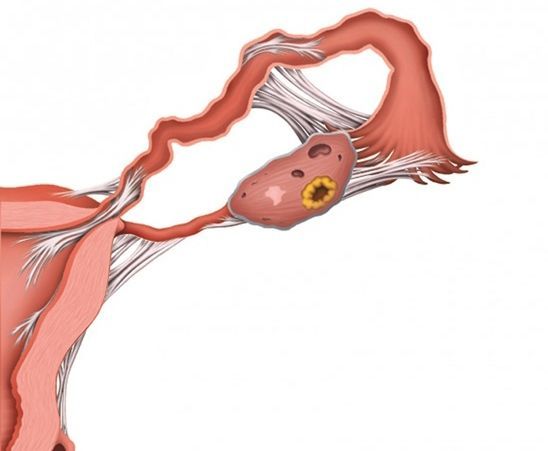
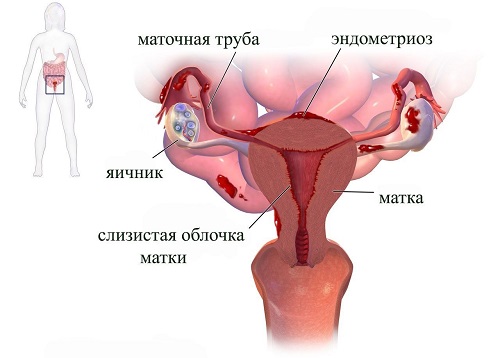
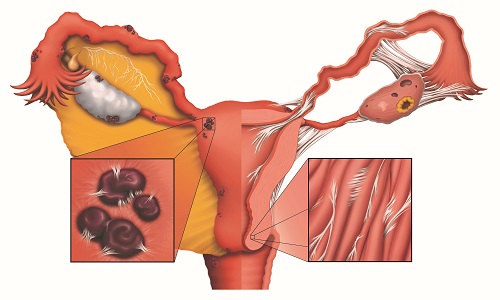



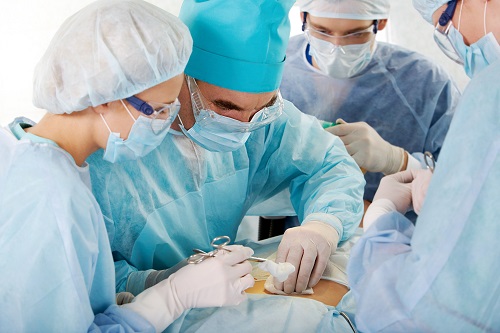




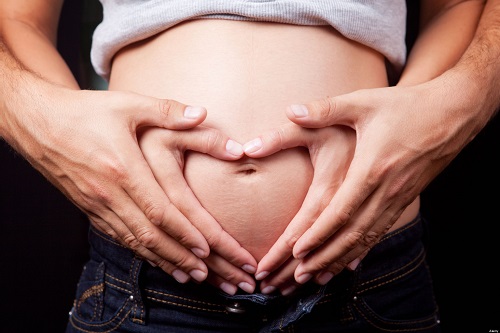







Comments
a couple of years ago, there was no side of metrogils from the same problem, there were no side effects ...
I’m not a fan of peeling at all, it saves from acne of metrogil, it also smoothes it ...
Great article! ...
I take the second course of the Capsules Climafite 911. The tides went very quickly. It became calmer, irritability went away and I sleep well ...
i also noticed - it is worth nervous, everything immediately affects the face. Therefore, I try to avoid conflicts and unpleasant people. Of the creams, I like Miaflow from wrinkles - smoothes not only small wrinkles ...